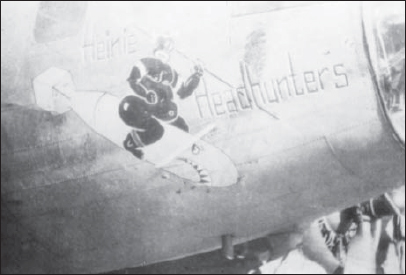SERIES EDITOR: TONY HOLMES
OSPREY COMBAT AIRCRAFT 38
B-17 FLYING FORTRESS
UNITS OF THE MTO
William N Hess
CONTENTS
THE NUCLEUS
B efore being sent to the Mediterranean, the founding units of what would eventually become the Fifteenth Air Force had kicked off the USAAFs strategic bombing campaign with the fledgling Eighth Air Force in the late summer of 1942.
The pioneer bombardment group in the ETO was the 97th BG, which had trained in Florida and then made the first transatlantic flight of any heavy bomber unit en route to England. Despite numerous problems with the weather, crews from the group flew 18 Boeing B-17Es to Scotland via Labrador, Greenland and Iceland. Arriving at Prestwick on 1 July 1942, the 97th duly flew south to bases at Polebrook and Grafton Underwood, in Northamptonshire, where it was fully installed by the 27th of that month. Brig Gen Ira C Eaker, Commander of the Eighth Air Force, saw to it that the group immediately began training for combat, and within a few short weeks the Flying Fortress crews were familiar with the operational procedures followed by the Royal Air Force. Instilled with the necessary knowledge for them to embark on bombing missions into occupied Europe alongside British units, the Eighth Air Force now considered itself ready to launch its audacious daylight strategic bombing campaign.
Mission No 1 took place on 17 August 1942 when 12 B-17s laden with 600- and 1100-lb British bombs were sent to attack marshalling yards at Rouen-Sotteville, in France. Aboard the lead aircraft was Col Frank Armstrong, CO of the 97th BG. Flying as co-pilot in Maj Paul Tibbets bomber (the lead machine in the second element) was Gen Ira Eaker himself, who later declared the mission to have been a success. There were no casualties. The men had experienced their first flak, and a solitary Focke-Wulf Fw 190 fighter had made a pass at the formation and a ball turret gunner had returned fire.
Shortly after the arrival of the 97th BG in the ETO, a second transatlantic movement took place when the 301st BG, under the command of Col Ronald Walker, began to arrive in England. By 21 August the group had assembled in its entirety at Chelveston, again in Northamptonshire.
On 5 September the 301st joined the 97th BG on a mission to the French city of Rouen, thus experiencing combat for the first time. The following day a third Fortress group in the form of the 92nd BG (based at Bovingdon, in Hertfordshire), joined them as the Eighth Air Force targeted the Potez aircraft plant at Meaulte, in France. The B-17s came under constant attack from the time they made landfall, resulting in the 97th BG losing its first bomber to the Luftwaffe the 92nd BG also lost a Flying Fortress to enemy fighters minutes later, the aircraft crashing into the sea.
B-17F 41-24363 Bad Penny was one of the first Fortresses assigned to the 301st BG in June 1942. Flown both in the ETO and MTO by Capt John Bruce, it was lost to German fighters whilst he was at the controls during a mission to Bizerte, in Tunisia, on 28 November 1942. The bomber had only arrived in North Africa (Tafaraoui) with the 301st four days earlier (USAAF)
B-17F 41-24351 Heinie Headhunters was originally assigned to the 353rd BS/301st BG at Chelveston in July 1942, and it had flown 52 missions with the group by the time it was transferred to the 416th BS/99th BG in December 1943. Renamed Tail End Charlie, 41-24351 completed a further 21 sorties before moving once again to the newly-formed 840th BS/483rd BG in March 1944 it subsequently participated in the latter groups first combat mission, on 12 April 1944. 41-24351 finally returned to the USA on 13 June 1944 and was sold for scrap in July of the following year (USAAF)
A number of other missions were flown in September, and when both the 97th and 301st BGs returned to the Potez works on 2 October, yet another large scale air battle erupted. This time, however, all the B-17s made it back to the UK thanks to effective fighter cover provided by RAF and USAAF units. Seven days later the Eighth Air Force sent out its biggest force of heavies to date when 108 bombers were sortied against the locomotive, carriage and wagon works at Fivres-Lille, in France. The mission was heavily opposed by the Luftwaffe, and two B-17s were shot down, including one from the 301st BG the group had suffered its first combat loss.
Following this mission a spell of bad weather set in and the bombers avoided the German fighters until 21 October, when 66 B-17s and 24 B-24s set out to attack the Lorient U-boat pens on the French coast. Due to overcast conditions over occupied Europe, only 15 bombers from the 97th BG actually found the target after dropping down to just 7500 ft in order to get under the cloud cover. Attacking from this height, the B-17 crews surprised enemy flak defences, and the bombing proved to be highly effective against workshops and floating docks. However, as the Fortresses turned away from the target area an estimated 30+ Fw 190s from III./JG 2 attacked the bombers from above. Despite the gunners defending the B-17s as best they could, three Fortresses were lost in just a matter of minutes.
This mission would prove to be the last action that the pioneering 97th BG would see from bases in England, for on 9 November 1942 it commenced a theatre move to North Africa following the launching of Operation Torch (the Allied invasion of North Africa) just 24 hours earlier. The group would be followed out by the 301st BG 17 days later.
Once in-theatre, control of both groups passed from the Eighth to the Twelfth Air Force.
NORTH AFRICA
T he weeks prior to the invasion of North Africa saw a number of secret missions flown by 97th BG crews. The first of these occurred on 18 October 1942 when recently promoted Lt Col Paul Tibbets flew Gen Mark Clark, then commander of all US ground forces in Europe, to Gibraltar, along with a mysterious wooden box. The latter held some US$100,000 in gold 20 franc coins which were going to be paid to corrupt Vichy French officials in North Africa in order to secure their cooperation with the Allies. However, it seems the coins were lost overboard when they were dropped from a small boat in the final stage of their long journey!
More senior commanders were flown by the 97th BG on 5 November when Gen Dwight Eisenhower, Commander of Allied Forces in North Africa, Gen Clark and Gen Kenneth Anderson, Commander of the British First Army, journeyed from Britain to Gibraltar. The following day they were followed by Brig Gen Jimmy Doolittle, commander of the newly formed Twelfth Air Force. En route to the Rock, Doolittles unarmed B-17 was intercepted by four Ju 88s over the Bay of Biscay, forcing pilot Lt John Summers to dive for the deck and make a run for it over the whitecaps. The first three enemy aircraft made their passes and left, but the fourth came in on nearly a collision course. As it passed over the B-17 one of the Ju 88s gunners fired a burst which wounded the co-pilot of the Fortress. Doolittle immediately rendered first aid, and once the injured crewman was taken care of, the General eased himself into the co-pilots seat and helped fly the bomber to Gibraltar.















